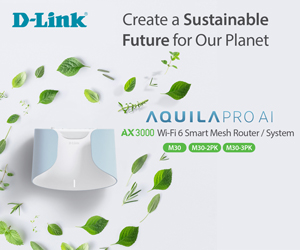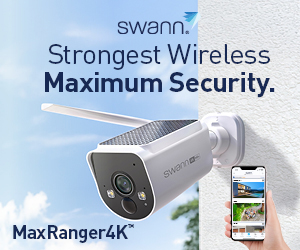The ASUS Zenbook Pro 14 Duo OLED 2022 is a vertically stacked 1.5-screen laptop suited to creators and others that need two, well, 1.5 work screens.
But it will soon be superseded by the 2023 version. That means 13th Gen Intel Core up to i9-13900H, a faster GeForce RTX GPU/MUX, and a brighter 600 nit peak panel (450 SDR) panel. Otherwise, it is the same concept and construction, and the current model may be a run-out bargain.
When most people see the Duo, they emotively fall in love with it. While that is also true of this reviewer, our objective advice is that for most users, you are better off getting a smaller, lighter Intel Evo OLED notebook (ASUS has plenty) and an external monitor and still have considerable change.
There is also a $4199, 15.6” Celestial Blue – UX582ZM-KY012W version that we are not reviewing.
- i7-12700H/16GB/1TB
- 15.6” 1920 x 1080, 16:9, OLED
- 14″ 1920 x 550 IPS second screen
- Wi-Fi 6/BT 5
- 92Wh battery
Note also that this is a review for the ZE model that includes the NVIDIA GeForce 3050TI GPU. The standard model UX8402 only has an integrated Intel Iris Xe GPU.
Australian Review: ASUS Zenbook Pro 14 Duo OLED 2022 Model UX8402ZE-M3047W
| Website | Product Page and PDF Manual |
| Price | From $3400 base model without GeForce to $4K+ with GeForce |
| From | Model as tested approx. $3500 at Scorptec, mWave and other computer retailers |
| Warranty | 1-year ACL |
| Country of Origin | China |
| About | Asustek Computer is a Taiwanese company that produces motherboards, graphics cards, optical drives, PDAs, computer monitors, notebook computers, servers, networking products, mobile phones, computer cases, computer components, and computer cooling systems. |
| More | CyberShack ASUS news and reviews |
We use Fail (below expectations), Passable (meets low expectations), Pass (meets expectations), Pass+ (near Exceed but not class-leading) and Exceed (surpasses expectations or is the class leader) against many of the items below. You can click on most images for an enlargement.
As reviewed:
- Intel I7-12700H
- 16GB/1TB
- NVIDIA GeForce 3050Ti
First impression – Pass
I have already admitted to being initially smitten by it. The only thing stopping me from impulse buying it was the knowledge of the 2023 version coming soon. But as I used it over a few weeks, I started to see past the skin-deep beauty of the 1.5-screen and ask if the second half screen was really necessary.
The answer for me was no. There are many excellent OLED Intel notebooks in ASUS’s range, including the ZenBook 14X OLED touch screen at well under $2K. That would leave me room to buy a decent Thunderbolt dock and a 4K monitor or two – read Choosing the right monitor for your needs (guide 2023).
And that is the decision you must make. Are you a creator, videographer, photo editor or someone that could benefit from a second 12.7 x 4”, 32:10, 2880 x 864, IPS touch screen under the glorious 14”, 16:10, 2880 x 1800, OLED touch screen? Touch screens should be mandatory – take that Apple Mac!
It looks stunning in Tech Black mag-alloy. It is not too big at 32.35 x 22.47 x 1.79 ~ 1.96 cm x 1.7kg, but it has a design feature that may or may not concern you. The vertically stacked second screen pushes the keyboard forward to the front edge – there is no palm rest. And it puts the portrait (not landscape) oriented touchpad on the right side (lefties will hate this).
It is not a laptop device. It can get hot underneath and is designed to provide the power you expect only when on mains power.
Main screen – Pass+
It is a Samsung SDC416D/ATNA45AF01-0 AMOLED panel (AMOLED means touch). The screen folds back to 160°, but there is considerable screen wobble when using touch.
Technically it is 14.5” 2.8K (2880 x 1800, 234ppi), 16:10, 120Hz, 10-bit/1.07b colours, HDR, Touch/Pen, .2ms, OLED with a Gorilla Glass NBT scratch-resistant, covering. It has up to 70% less blue light (when enabled). It is a glossy fingerprint magnet.
Screen modes are:
- Native (default vivid colours) – over-saturated, but we like that.
- sRGB – Web content creation.
- DCI-P3 – Cinema colour.
- Display P3 – Wider gamut.
- +/-50 colour temperature adjustment.
- Dynamic stepped 60/120Hz or a fixed refresh rate.
Tests
- 550 nits peak in 2% window (tested 400 HDR and 350 SDR in 10%).
- Delta E 2.2 (Tested 2.2).
- Infinite contrast (all OLED is infinite as the pixel can turn on and off, giving a zero black level).
- 100% DCI-P3 (Tested 99.6%).
- 100% sRGB (Tested 100%).
- 100% Adobe RGB (Tested 97.5%) Pantone Validated.
- PWM – DC Dimming option at 60%+; otherwise, PWM at 240 Hz – very low and no issue.
This screen is almost perfect, and it is suited to those demanding colour accuracy.
Second screen – Pass
It is a BOE BOEA8D/NV127H4M-NX1, 12.7” (Diag) x 4” (H), 2880 x 864, 273ppi, 32:10, 120Hz, 8-bit/16.7m colour, a-SI TFT-LCD panel. The panel has a touch/pen digitiser and a matte finish overlaid.
When you open the main screen, it tilts up 12°, allowing better airflow through the chassis.
Its biggest obvious issue is that the matte panel looks grainy and is not colour-matched (10-bit versus 8-bit), so it is not really an extension of the main screen.
It is extra real estate. We found the 32:10 format worked well in timeline video editing and parking open apps but not useful for productivity apps like Outlook.
When you drag an app from the main screen resolution changes, and the image is about 50% smaller.
There are several modes:
- 500 nits peak (tested 500 in 2%)
- 100% sRGB (99.9%)
- 100% Adobe RGB (90%)
- 100% DCI-P3 (97)
- 1200:1 contrast (1030:1)
- PWM: NO
You can read all about the ScreenPad+ functionality.
Display Modes
- Normal Mode: Through Gamma and Colour temperature correction, the image is as close as possible to what your eye can naturally see.
- Vivid Mode: This mode allows you to adjust the image’s saturation, making it more vivid and vibrant.
- Manual Mode: This mode allows you to adjust the colour or temperature value from -50 to +50.
- Eye Care Mode: This mode reduces blue light emission by up to 30%, helping to protect your eyes.
- Enable HDR from Settings > System > Display for a better viewing experience with your OLED panel.
- TÜV Flicker Free Certification (DC Dimming from 50% brightness).

ASUS Pen – Pass+
The ASUS Bluetooth Pen 2.0 has 4096 pressure levels, H/2H/B/HB pen tips and USB-C charge. It has two side mouse buttons and a top shortcut button. It uses Microsoft Pen Protocol MPP 2.0 for 5-350g pressure enabling fine lines to thick strokes.
We found it more useful than the Microsoft Pen due to the different-sized pen tips. You can get tip replacements from eBay.
Processor: Intel i7-12700H 3.5/4.7GHz, 10nm – Pass+ on mains power, Passable on battery
This has six performance cores, eight efficiency cores and 20 threads. Its TPD ranges from 45-115W.
There are three modes in MyASUS (Geekbench 5 single/multi-core scores in brackets on main power and battery)
- Performance – full power, fans to 50dB (1684/12,297 and 994/7450)
- Standard – limits CPU/GPU to about 80% power, fans to 43dB (1560/11,926 and 820/6634).
- Whisper – limits CPU/GPU to about 50%, fans <30dB (1434/11,151 and 725/5717)
These are big drops from power to battery, reinforcing that it is meant to be used on a desktop.
In addition, Windows has performance modes that can increase or decrease performance and battery life accordingly.
It also gets hot underneath, hitting 52° at 100% load. ASUS has a dual-fan, dual-heat pipe, thermal module, and we can only say to keep the bottom vents clear (not on your lap).
GPU – Pass+ on mains
The integrated GPU is an Intel Iris Xe G7 96 EU (execution units). The review unit has an optional NVIDIA GeForce RTX 3050 Ti 4GB GDDR6 50W real-time ray tracing GPU.
Tests on Performance Mode
| GPU | OpenCL | Vulcan | Cuda |
| NVIDIA battery/mains | 48942/65657 | 9415/18296 | 51414/67746 |
| Intel Iris XE battery/mains | 17572/19928 | 12839/47196 | N/A |
As there is no mention of a MUX switch in the manual or on the website, we must assume it does not have one. A MUX Switch directly connects the dGPU to the display rather than going through the CPU and the integrated GPU (iGPU). This bypass should enable better video performance by reducing latency and increasing frame rates.
But the HDMI 2.1 port only uses the NVIDIA GeForce GPU and supports up to 8K@60Hz and 4K@120Hz. The Thunderbolt 4 ports use the Intel Iris Xe for its alt DP 1.4 output supporting 2 x 4K@60Hz monitors. So maybe a MUX, in this case, is unnecessary.
Storage – Very fast PCIe 4.0 – Exceed
The review unit has an M2.2280, 1TB PCIe Gen 4 x4 (Option 512GB/2TB) Samsung PM9A1 (OEM version of the 980 Pro). It uses the Samsung Elpis (S4LV003) Controller with 8 channels and 512 MB LPDDR4 cache memory. It has Samsung 3D-NAND (TLC 136 layers). The 1TB version has a theoretical 7000/5100MB/s read/write (SLC cached).
Crystal Disk Mark, a measure of peak throughput, is 6567/4840MBps – blazingly fast. It is also excellent for larger files.

CPDT, more about sustained throughput scores 4260/1770MBps.

Black Magic is a video render disk test. It can handle 4320p@50fps.

Memory – Pass+
It has 16GB LPDDR5 4800MHz soldered to the motherboard. There is an option for 32GB at order, but we cannot find if this is also soldered or uses a SO-DIMM socket.
Comms – Pass+
It has Wi-Fi 6e Intel AX211E 160MHz but would only connect at 1200/1200Mbps full duplex on the 5GHz channel (not 6GHz). Our test router is a Netgear Orbi RBKE963 Quad-band Wi-Fi 6E AX 11000 mesh, and we have generally have no issues with Australian-certified Wi-Fi 6E devices.
But we know why ASUS will not connect. Australia has crippled Wi-Fi 6E, and ASUS is yet to issue firmware updates for Australian use.
- USA: 5925-7125Mhz, 36dBm, 4W transmit power for upper band and 30dBm, 3.3W for lower band. Total 59 x 20Mhz channels.
- Australia: 5925-6425MHz, 25dBm, 2.6W for lower band. Total 24 x 20Mhz channels.
It has Bluetooth 5 and supports Windows quick connect.
Ports – Pass+
- 2 x Thunderbolt 4, 40GBps 20V/5A/100W upstream charging), alt DP 1.4 from Iris Xe GPU
- 1 x USB-A 3.2 Gen 2 10Gbps.
- 3.5mm 4 pole stereo and mic.
- HDMI 2.1 TMDS (Transition Minimized Differential Signalling). It runs off the GeForce GPU. Access is from the rear of the chassis.
- MicroSD 7.1 can use high-speed Express cards up to 985MBps sequential read (access from the rear)
- 20V/9A/180W power (access from the rear).
This is a prime candidate for a decent Dock – read Plugable TBT3 Thunderbolt 3/4 docking station range. We tested with Dual 4K@60Hz monitors and a range of USB devices, including cameras etc. The nice thing about this is that it has two TB4 ports, and the second can also be USB-C 4 (20Gbps), 3.2 Gen 2 (10GBps), or Gen 1 (5bps). These also support alt DP 1.4 for another monitor (needs USB-C monitor or USB-C to HDMI or DP adapter).
The Dock only accesses the Intel Iris Xe GPU, which is fine for productivity and non-gaming use. Our test dock supports 100W upstream charge – see Battery below.
Battery claim 9.5 hours – Hmmm – Passable
ASUS claims 9.5 hours, and it achieves that using the lowest spec version Intel Core i5-12500H, 16/512GB, 2.8K OLED (60Hz/200 nits), second panel off, and a 76 Wh battery.
It has 4-cell/76Wh battery and a 20V/9A/180W plug pack. Careful – there is a gap between the screen and chassis, and the charging cable was frequently caught (squashed).
Using the 180W charger, the recharge time was slightly over an hour. But 100W USB-C upstream charging takes much longer (over three hours) and has as much as a 30% discharge under load.
Tests
Main screen on 60Hz – Screen pad off
- Worst was approx. 3 hours under heavy load.
- Best was video loop 50% aeroplane, approx. 7 hours.
- PC Mark Modern Office Battery: 3 hours and 58 minutes.
Screen pad on
- 2 hours heavy load
- 4 hours typical load
Main screen on 120Hz – Screen pad off
We repeated some tests and expect that battery life will reduce by about 20% on a 120Hz screen.
These are as expected from the i7-12700H and reinforces our view that this is meant for main power use.
Camera – Passable – Pass with AISense
It is a .9MP, 16:9, 1280 x 720p still, and a 720p@30fps video camera with larger 1.4um pixels to capture more light. Spending $4K, you expect at least a 1080p camera. It does support Windows IR Hello login.
MyASUS App and AiSense uses the CPU’s NPU to adjust webcam settings for light, background blur, gaze and motion tracking. Tested and fit for purpose, well as good as you can get with a 720p camera.
Mics – Pass
It has a dual front mic array. AI noise cancelling removes sound outside the 1-4kHz range (clear voice) and can be set for basic, single, or multiple presenters. Tested and fit for purpose.
Sensors – Pass
It has three sensors – most laptops have one.
- Ambient Light – adjust brightness according to ambient light.
- RGB – adjust the colour according to ambient colour temperature.
- ToF – presence detector.
Keyboard – Good, but the trackpad position may be an issue – Pass
The second screen means the keyboard has no front palm rest deck. That is fine when using it on a desk (the desk becomes the palm rest) but not as a laptop on your lap.
It is a 3-level backlit using injection moulded semi-opaque lettering on chiclet style 15 x 15 mm disked keycaps. These last far longer than decals or painted keycaps. The key tops are slightly dished to enhance the feel. The throw is 1.4mm, and actuation is about 40g – very good.
It does not have a numeric keypad; instead, a portrait shape 5.3 x 7.8 cm Touchpad on the bottom right of the keyboard. It takes a lot of getting used to (over a front landscape design) and means far more movement to get the cursor around the screen. It supports three-finger gestures. Left-handers will hate it – I did.

Speakers – Excellent sound – Exceed
The Harman Kardon tuned, Left/Right down/diagonal-firing are under the front deck. I can’t recall hearing better sound from a laptop – ever. The maximum volume is 84dbB (louder than average).
Our speaker test bypasses all the filters to give a native sound signature.
There is no sub-woofer, so you don’t expect low bass 20-50Hz. But mid-bass cuts in nicely from 70Hz and solidly builds to 200Hz, so the bass is clear, not muddy as we expect from small speakers. It is then pretty well flat (good) from 200Hz to nearly 10kHz and then slowly declines to 20kHz. If I were to be picky, the upper-treble clips the tops off some sounds, but that is minor.

The native signature is pretty close to neutral – a flat (good) response that neither adds nor subtracts from the original music! The only issue here is garbage-in, garbage-out – the better the music quality, the better it sounds. The Dolby Atmos EQ can make a difference by recessing specific frequencies (it cannot add to a native signature).
So, you get most of the musically important bass (without sub-bass), excellent mid, and a crisp treble that helps define directionality.
The sound stage is a little wider than the keyboard deck and has excellent left/right separation and direction. When we tested with Dolby Atmos sound (it decodes DA metadata to 2.0), the sound stage widens considerably, and you also get some 3D height towards to top of the screen.
There is one caveat, and that relates to the desktop material you place it on. You lose that excellent sound stage if it is placed on timber, leather, fabric (or your lap) or some other sound-absorbing material. We test on thick glass.
Build – Exceed
It is 32.35 (W) x 22.47 (D) x 1.79 ~ 1.96 cm (H) x 1.75kg. Build quality is superb. The touch screen does wobble when used as such.
Importantly it is built to US MIL-STD 810H military-grade standards, and it shows.
MyASUS
MyASUS is a comprehensive App for this device. It allows for customisation well beyond Windows standards. We won’t go into it all – just list the features.
- System Diagnostics.
- Dashboard.
- Battery health charging – selects 80% charge when constantly on mains power.
- Fan Profile – Whisper, Standard and Performance (only on mains power).
- Splendid – colour presets Normal, Vivid, Manual, Eye Care.
- Colour Gamut – Native, sRGB, DCI-P3, Display P3.
- Tru2Life – HDR and colour enhancement for video.
- Target Mode – selectivity dims non-active screen areas.
- Function key lock.
- Wi-Fi SmartConnect – selects the strongest signal.
- TaskFirst – prioritises internet connection for communication, games, streaming etc.
- Function key lock.
- Automatic keyboard brightness.
- Live update.
- ASUS OLED Care – minimises the potential for OLED burn-in from static images.
- OLED Flicker free – DC dimming.
- Refresh – Auto or 60/120Hz.
- AI Noise Cancelling – Off, basic, single/multi-presenter.
- AI noise cancelling speaker – for teleconferences and focuses on 1-4kHz.
- Sound Mode: Dynamic, Game, Music, Movie, Voice, and three custom presets.
- AiSense camera – Lighting, Blurring, gaze, motion tracking.
- AdaptiveLock.
- ProArt Creator Hub.
- ScreenXpert – manages apps over multiple displays.
- GlideX – wireless screen extend.
- Link to MyASUS – integrates PC with a smartphone.
- Privacy settings (ASUS – not Windows).
CyberShack’s view – ASUS Zenbook Pro 14 Duo OLED 2022 UX8402Z – superb if you can use it
This is a dual-screen – well, 1.5 screens, really. It is handy for specific tasks where you need to see both the work and timeline control on the screen. Otherwise, it is less than useful as the second screen is 32:10 (twice as wide as 16:10) and gets some funny display results.
The main screen is gorgeous. Screen accuracy is close to 100% of everything.
Battery life is as expected – not the 9.5 EVO hour but between 3-6 hours, and as it is really not a good laptop format, you will likely run it on power.
It is power-hungry – a 180W power pack and 100W USB-C does not keep up under load. Under regular use – yes.
But you can’t help but desire it. Heart says yes, head says no. Duo is for those that need extra screen-estate
Rating Explanation
Features: 95 – it has it all
Value: 80 – I can see the appeal of a 1.5 screen but look closely at single OLED versions and buy a dock and dual 4K screens for about the same price.
Performance: 90 – as far as a laptop goes, the i7-12700H processor is perfect, and with the NVIDIA GeForce 3050Ti and an HDMI external monitor, it is good for games.
Ease of Use: 80 – the second screen can become superfluous unless you have an application for it.
Design: 85 – great design but the keyboard at the front and trackpad take getting used to.
ASUS Zenbook Pro 14 Duo OLED 2022, ASUS Zenbook Pro 14 Duo OLED 2022, ASUS Zenbook Pro 14 Duo OLED 2022, ASUS Zenbook Pro 14 Duo OLED 2022, ASUS Zenbook Pro 14 Duo OLED 2022
CyberShack Verdict
ASUS Zenbook Pro 14 Duo OLED 2022 UX8402Z
From $3400 but be aware of model inclusions















Comments